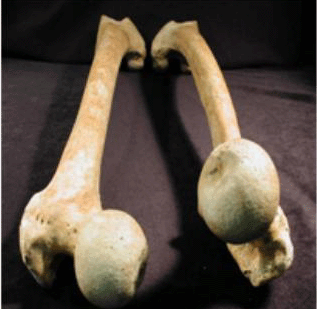Over the last half decade or so, hip injuries have been increasingly on the rise, especially in certain athletic circles including baseball, hockey, and soccer. Things such as femoral acetabular impingement, sports hernias, groin and hip flexor strains, and labral tears are now an all too common occurrence in many competitive sports. Some attribute the rise in these types of injuries purely to better diagnostic testing and criteria, however the dramatic rise is difficult to be explained by this alone. Another theory is that the increasing sports specialization seen starting at earlier and earlier ages. Kids now play the same sports and do the same movement patterns year in and year out. This can lead to asymmetries and movement dysfunctions predisposing the athletes to injury. If a strength training program does not take into account these asymmetries and dysfunctions, minor injuries can reach threshold at an accelerated rate.
These problems can be partly addressed by an appropriate understanding and assessment of the anatomy concerning hip rotation. When looking down from above, a “normal” femoral neck slants at around 15 degrees anterior to a horizontal line passing through the femoral condyles. This is termed “normal anteversion”. A femoral head well beyond this 15 degrees is said to be in “excessive anteversion” and is often associated with a pigeon foot position to realign the hip joint in the proper position. On the otherhand an femoral head at an angle of less than 15 degrees is said to be in “retroversion”.
The problem is that many individuals have varying degrees from this “normal anteversion” as well as side-to-side asymmetries. These differences can lead to movement compensations body-wide. Prescribing exercises aimed at correcting the compensations without addressing the anatomical limitations in hip rotation can cause further damage and aggravate the problem even more. As an example, many exercises such as a split squat are cued to keep both feet pointed straight forward. However, in the case of an individual with excessive anteversion, this directly causes impingement between the femur and the posterior acetabulum. Say a client appears to have limited external rotation on the right compared to the left, so you go ahead and add some external rotation stretches to correct the asymmetry. However, he has excessive right femoral anteversion such as that seen on the image below. He would more than likely end up with a painful irritated hip.
It is now well accepted, especially in throwing sports, that total glenohumeral motion compared between one side and the other is more important than either individual internal or external rotation respectively. This could be due to both bony adaptation made by repetitive motions and from bony asymmetries which persons are born with. Either way, if total motion is close bilaterally and near normal ranges, stretching is probably not the best choice.
Could this type of information also be applied to the hip? I think so, however it is important to distinguish the differences between limitations caused by the bone structure of the femur and/or acetabulum and soft tissue restrictions. If a soft tissue problem is indeed the culprit, then by all means, stretching and other techniques should be implemented. On the other hand, if it is a bony asymmetry, exercise choice as well as foot position should be taken into account.
To discriminate between theses two issues, begin by having the client seated on the treatment table with knees and hips in 90 degrees of flexion. Stabilize the distal femur with one hand and make sure that the pelvis doesn’t tilt or rotate. Place the other hand on the distal tibia and move the leg laterally to assess internal rotation (IR) and medially to assess external rotation (ER).
Next, position the client in prone with both legs extended. Bring one leg up into 90 degrees of flexion at the knee. Stablize with one hand on the hip and move the distal tibia laterally and medially with the other hand. If you choose to measure this, you may require additional assistance.
If there is now a difference between IR and ER you can probably assume there is a capsular or soft tissue limitation. This is because the prone position puts most soft tissues and the hip capsule in a more neutral position, allowing greater motion. On the other hand, if both procedures yield similar results, the limitations are most likely anatomical in nature.
For example, excessive anteversion will present with hip medial rotation of 60 degrees or more. Whereas, excessive retroversion will have much greater lateral rotation. An increase ROM in ER and a decrease in IR or vice versa with the hip in both neutral and 90 degrees of flexion is an indication of ‘version’ of the hip.
Craig’s test can also be used to assess femoral ‘version.’ Once again, have the client lay prone on the table and flex one knee up to 90 degrees. Palpate the posterior aspect of the greater trochanter of the femur while passively rotating the femur laterally and medially. Find the position in which the greater trochanter is parallel with the treatment table or protrudes to most laterally. Normally this should be in a position of IR between 8 and 15 degrees.
Taking a person through rehab or starting them on a strength program assuming they have “normal” hips can lead to both short and long term problems. Being aware of each individual’s hip anatomy can lead to better prescription of both stretching and exercise programs. Something as simple as turning the toe or toes out slightly while either squatting or deadlifting for someone with femoral retroversion can quickly alleviate the associated discomfort and pain of the exercise. The overall message is that everyone has a slightly different structural build, and in order to maximize both performance and health, don’t assume that they are always “normal."


